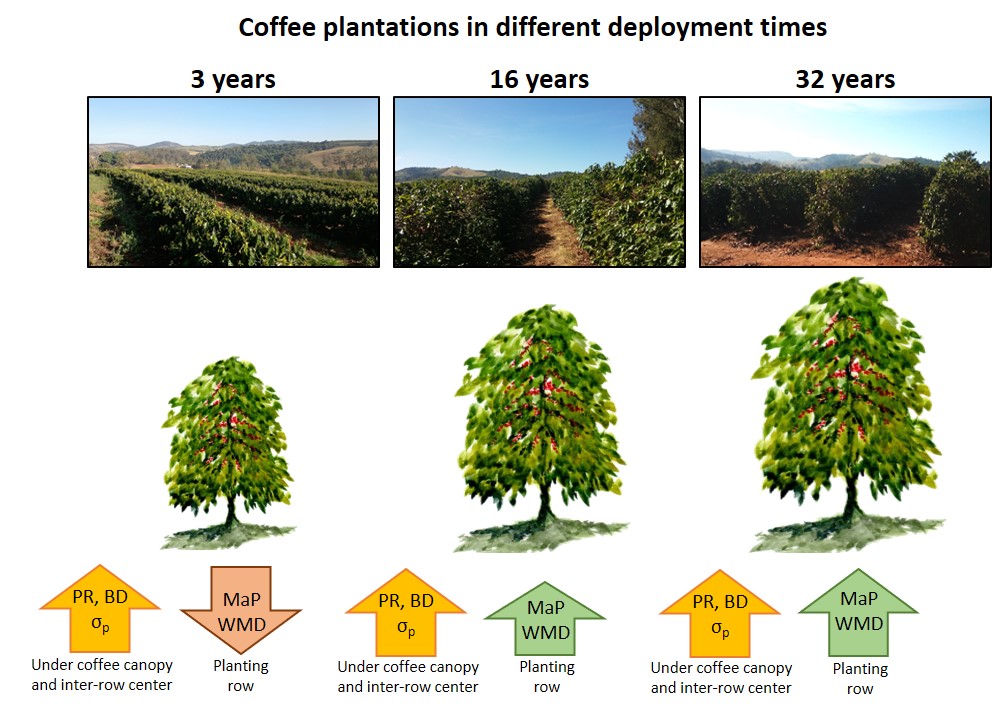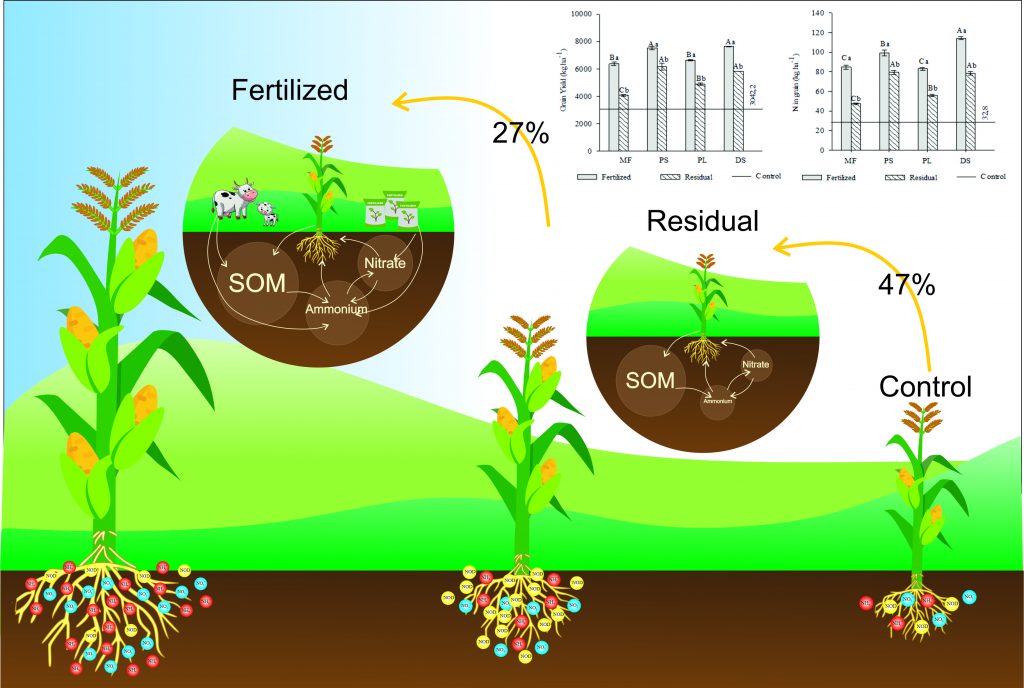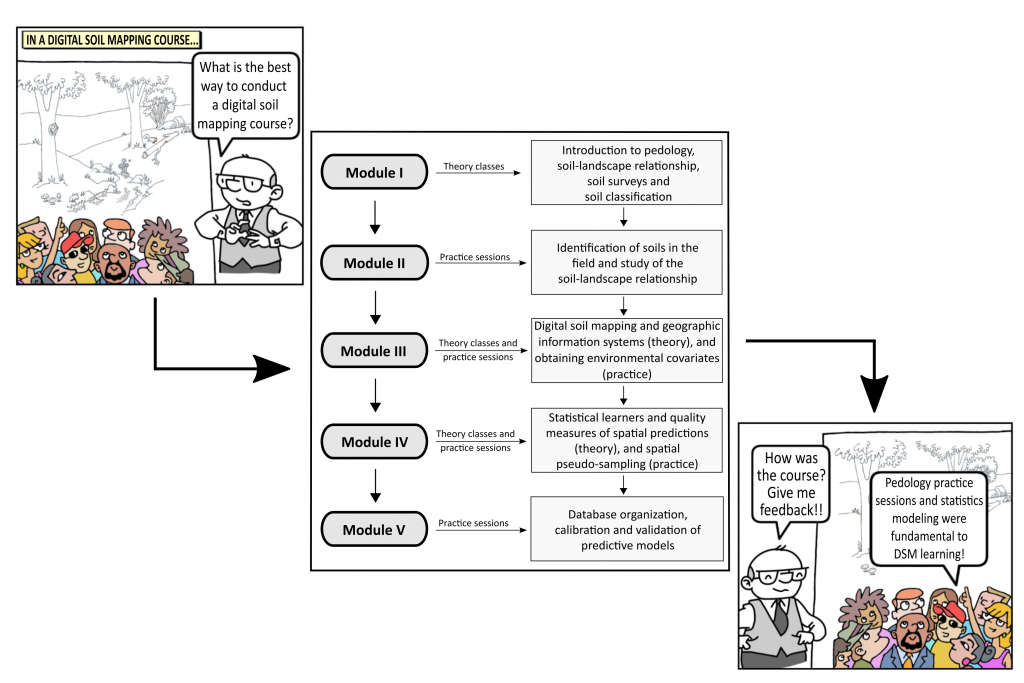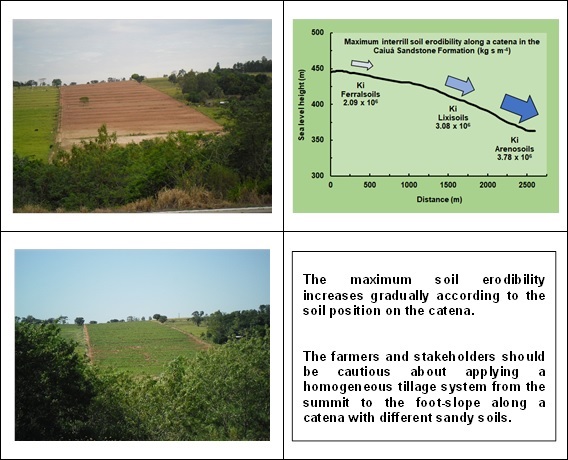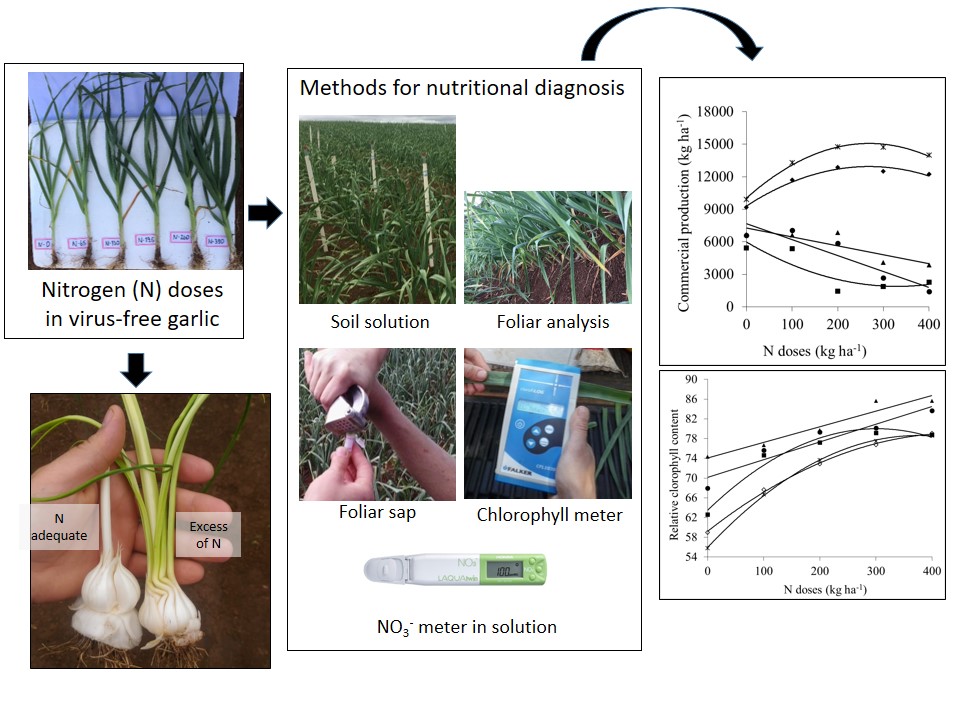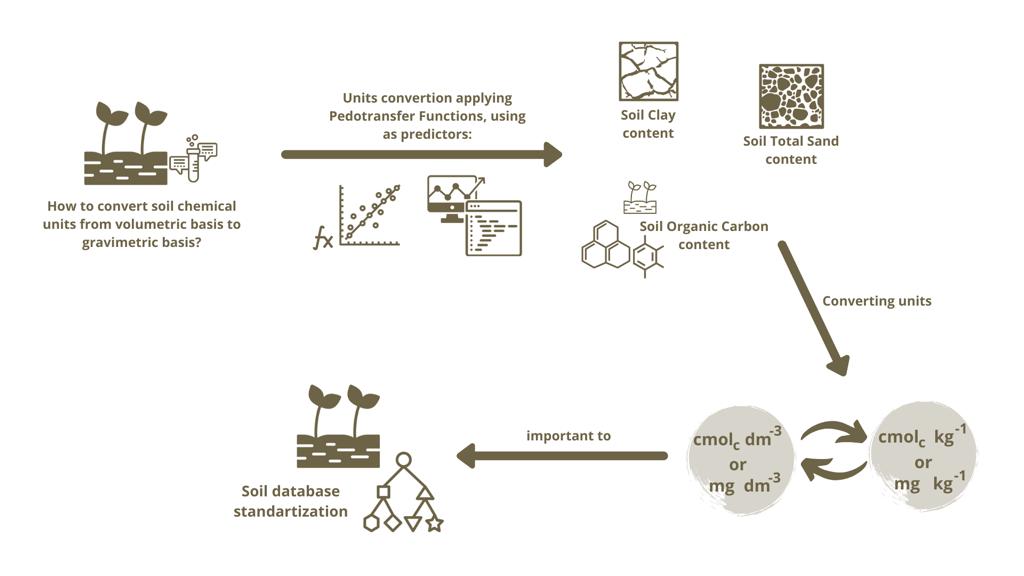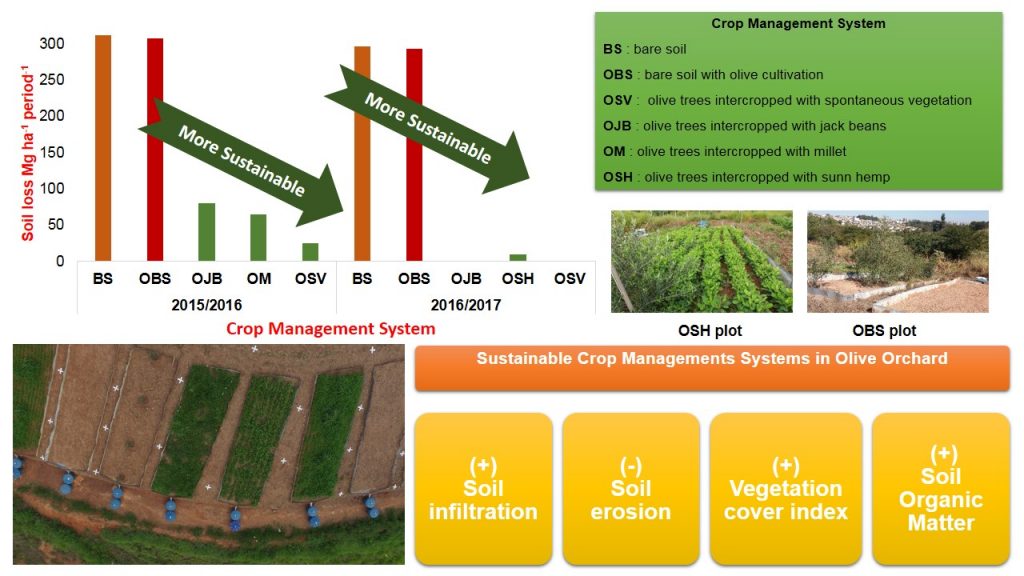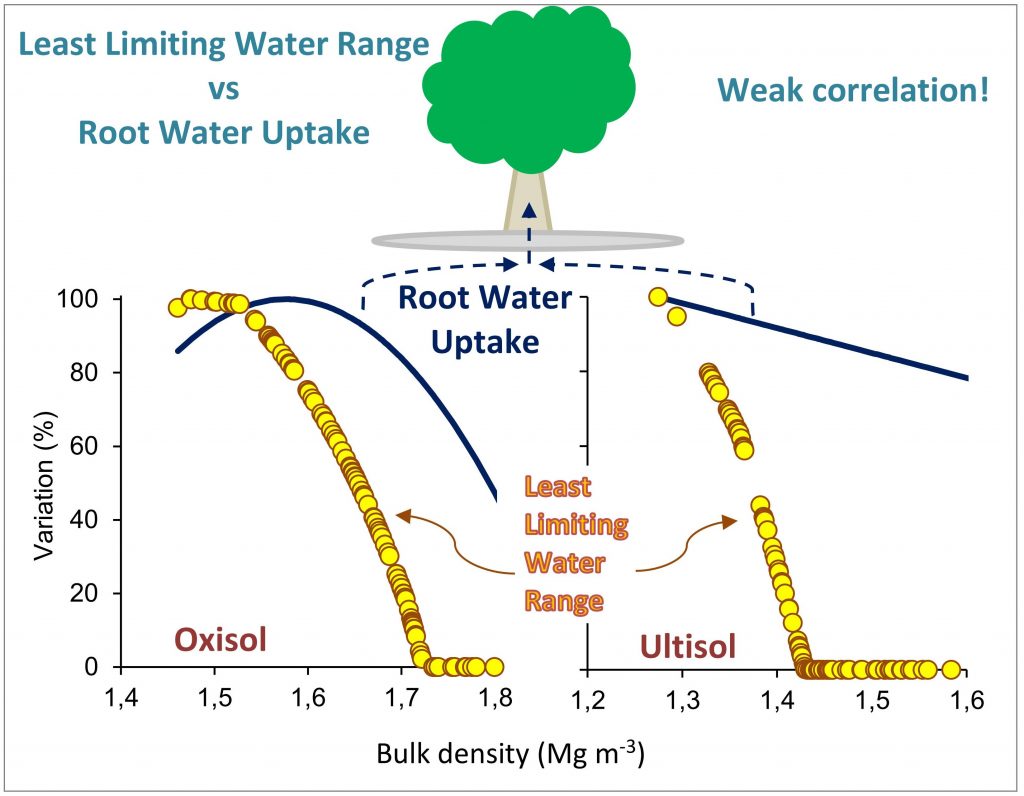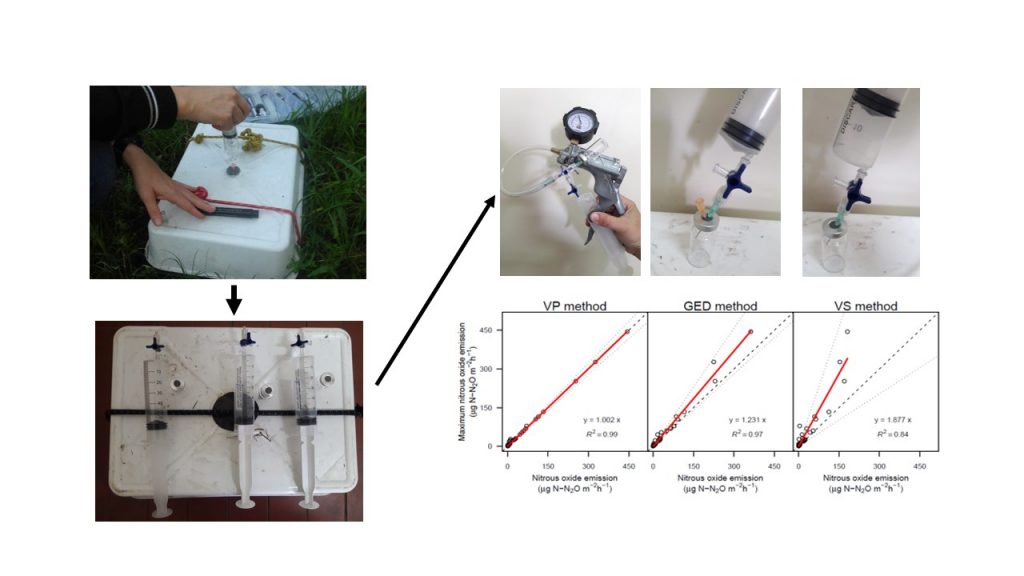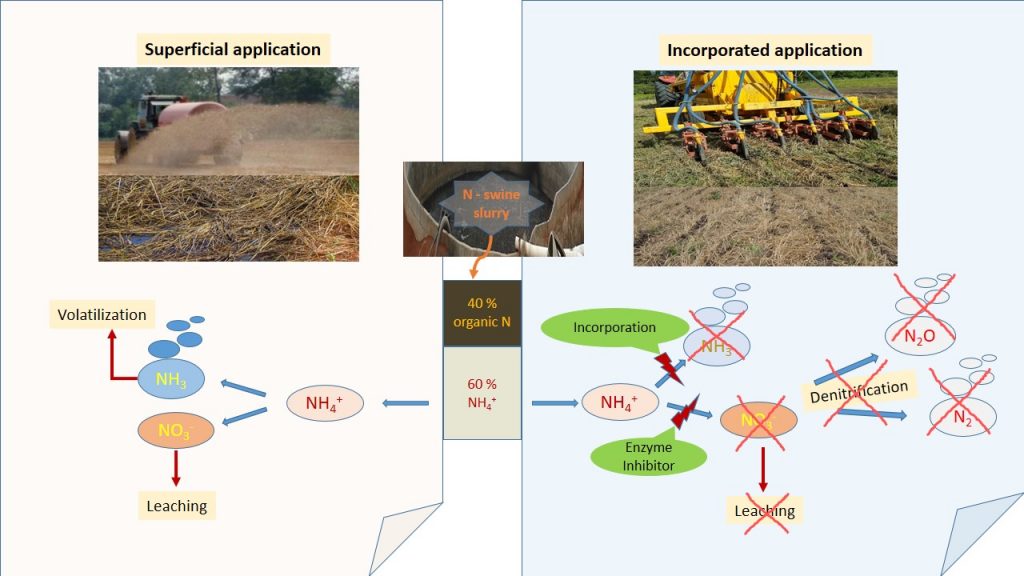Volume 44, 2020
Structural quality and load-bearing capacity of an Ultisol (Argissolo Vermelho amarelo) in mechanized coffee areas with different deployment times
14/May/2020
ABSTRACT The mechanized management systems used in Brazilian coffee plantations generate heavy machine traffic and lead to the application of loads on the soil that affect the soil structure and lead to widespread compaction. This study aimed to evaluate the influence of mechanized operations on coffee plantations with different deployment times on the soil structural quality of an Ultisol, based on its soil physical properties and soil load-bearing capacity. The experiment was carried out in Muzambinho, São Paulo State, Southeast […]
Residual and immediate effect after 16 applications of organic sources on yield and nitrogen use efficiency in black oat and corn
29/Jun/2020
ABSTRACT Soils with a long-term history of animal manure application exhibit higher residual effects of nitrogen (N) in soil and can affect the efficiency with which N will be used. This study aimed to evaluate how the immediate and residual effect of 16 applications of animal manure reflects on yields of black oat and corn rotation system, as well as N use efficiency. The study was carried out in no-tillage from 2004 to 2016 in Brazil. The treatments were pig […]
How is the learning process of digital soil mapping in a diverse group of land use planners?
03/Feb/2020
ABSTRACT The use of new technologies, the development of new software, and the advances in the machines ability to process data have brought a new perspective to soil science and especially to pedology, with the advent of digital soil mapping (DSM). To meet the demand for soil surveys in Brazil, it will be necessary to popularize the techniques used in DSM. To identify and map the soil to generate maps of land use capability, we proposed a theoretical and practical […]
Interrill erodibility of different sandy soils increases along a catena in the Caiuá Sandstone Formation
13/Jan/2020
ABSTRACT Soil erosion in tropical areas is a major problem for sustainability in agriculture and soil stability. In the Northwest of Paraná, cassava crop is produced using a conventional tillage system along a catena consisting of different soil classes: Ferralsols (near the summit), Lixisols (mid-slope), and Arenosols (foot-slope). Therefore, differential soil erosion rate and soil degradation are expected along the catena. Here, we test the erodibility of the three sandy soil classes in a representative catena of the Caiuá Sandstone […]
Nitrogen doses and nutritional diagnosis of virus-free garlic
03/Feb/2020
ABSTRACT The recommendations of nitrogen (N) fertilization in garlic are still based on different varieties of the current types that are infected with phytopathogenic virus. There are several methods for recommendation of nitrogen (N) fertilization in garlic, but there are no enough methods for N diagnosis in garlic obtained by meristem culture. The objective of this work was to evaluate methods for diagnosing the nutritional status of virus-free garlic subjected to N doses through the use of a specific NO3– […]
Pedotransfer functions: the role of soil chemical properties units conversion for soil classification
28/May/2020
ABSTRACT Chemical soil analysis data can be expressed by weight (i.e., gravimetric basis) or volume (i.e., volumetric basis) of the fine earth (sieved ≥2 mm), resulting in different units, cmolc kg-1 and cmolc dm-3, respectively. The research problem is that the difference between methods to express the same soil properties hinders the comparison of results and database or dataset standardization. This paper aims to develop pedotransfer functions (PTF) to obtain the density of fine earth, which will then be used […]
Assessment of soil erosion in olive orchards (Olea europaea L.) under cover crops management systems in the tropical region of Brazil
02/Apr/2020
ABSTRACT In the tropics, water erosion is one of the most important factors leading to the degradation and deterioration of agricultural land. Olive orchards have a low canopy coverage, especially during the first years after planting, due to the low density of olive trees. Given the fast expansion of olive orchards in Brazil, this study aimed to evaluate the effect of cover vegetation on soil and water losses under natural rainfall. In addition, it was assessed the crop performance and […]
Using root water uptake estimated by a hydrological model to evaluate the least limiting water range
14/May/2020
ABSTRACT The least limiting water range (LLWR) has been extensively determined, but evaluating if LLWR can indeed indicate soil physical stress on plant growth is still a controversial issue. In this study, we used the Hydrus-1D hydrological model to simulate root water uptake (RWU) to analyze if RWU and LLWR are correlated under stress conditions. The LLWR was determined in a sandy-loam Ultisol and a clayey Oxisol. In both soils, RWU extracted by plants (leaf area index set as 3) […]
Comparison of field measurement methods of nitrous oxide soil emissions: from the chamber to the vial
16/Jul/2020
ABSTRACT Nitrous oxide (N2O) is a greenhouse gas that contributes substantially to global climate change. The N2O soil emissions have a large uncertainty because of its low atmospheric concentration levels and enormous spatial and temporal variability, which hinders its correct field measurement. For this reason, there are many papers focused on improving the N2O measurements in the field, which focus on different parts of the measurement process. However, no studies have focused on determining the appropriate method, in terms of […]
Incorporation in soil and addition of enzyme inhibitor as a way to increase the efficiency of pig slurry and mineral fertilizer
07/Jan/2020
ABSTRACT The incorporation of nitrogen (N) fertilizers in the soil and the use of enzyme inhibitors (EI) can improve the efficiency of N fertilization by reducing losses by ammonia volatilization and nitrate leaching. This study aimed to evaluate the efficiency of EI addition and fertilizer incorporation on both grain and dry mass yields of corn as well as on some soil chemical properties, with focus on N availability. A field experiment was carried out for three years in randomized blocks […]

